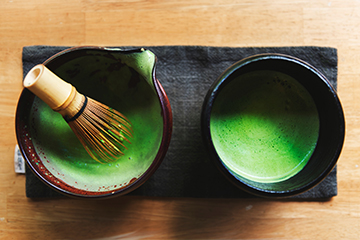
Identifiers
INS No. 141(i); Chlorophylls, copper complexes
INS No. 141(ii); Chlorophyllins, copper complexes, sodium and potassium salts
Sodium copper chlorophyllin
Potassium copper chlorophyllin
E 141(i); Copper Complexes of Chlorophylls
E 141(ii); Copper Complexes of Chlorophyllins
Physical Description
Sodium copper chlorophyllin is a green to black powder prepared from chlorophyll by saponification and replacement of magnesium by copper. Chlorophyll is solvent extracted from alfalfa (Medicago sativa). Chlorophylls, copper complexes are obtained by addition of an organic salt of copper to the substance obtained by solvent extraction of grass, lucerne, nettle and other plant material. The product contains other pigments such as carotenoids as well as fats and waxes derived from the source material; the principal coloring matters are the copper phaeophytins.
For chlorophyllins, copper complexes sodium and potassium salts, the alkali salts of Copper chlorophyllins are obtained by the addition of copper to the product obtained by the saponification of a solvent extraction of grass, lucerne, nettle and other plant material. After addition of copper to the purified chlorophyllins, the acid groups are neutralized to form the salts of potassium and/or sodium and the commercial products may be presented as aqueous solutions or dried powders.
Common Uses
Typical applications include confectionery, desserts, beverages, dairy products, ice cream, fruit preparation, bakery products, soups, sauces, snack food, seasonings, and convenience foods.
Specifications
JECFA
Codex GSFA Provisions
Chlorophophylls and Chlorophyllins, copper complexes (INS Nos. 141(i-ii)) are added to foods and beverages at up to maximum permitted levels (MPLs) as adopted by the Codex Alimentarius Commission. There are more than 50 food categories for which MPLs have been adopted in the General Standard of Food Additives (GSFA).
Regulatory Approvals
Safety Reviews
Toxicological Evaluation of Some Food Colours, Emulsifiers, Stabilizers, Anti-Caking Agents and Certain Other Substances (18th Report of the Joint FAO/WHO Expert Committee on Food Additives) WHO Food Additives Series 6, 1975. Available online
Toxicological Evaluation of Some Food Colours, Emulsifiers, Stabilizers, Anti-Caking Agents and Certain Other Substances (13th Report of the Joint FAO/WHO Expert Committee on Food Additives) FAO Nutrition Meetings Report Series No. 46A, 1969. Available online
EFSA ANS Panel (EFSA Panel on Food Additives and Nutrient Sources Added to Food), 2015. Scientific Opinion on re-evaluation of copper complexes of chlorophylls (E 141(i)) and chlorophyllins (E 141(ii)) as food additives. EFSA Journal 2015;13(6):4151, 60 pp. Available online